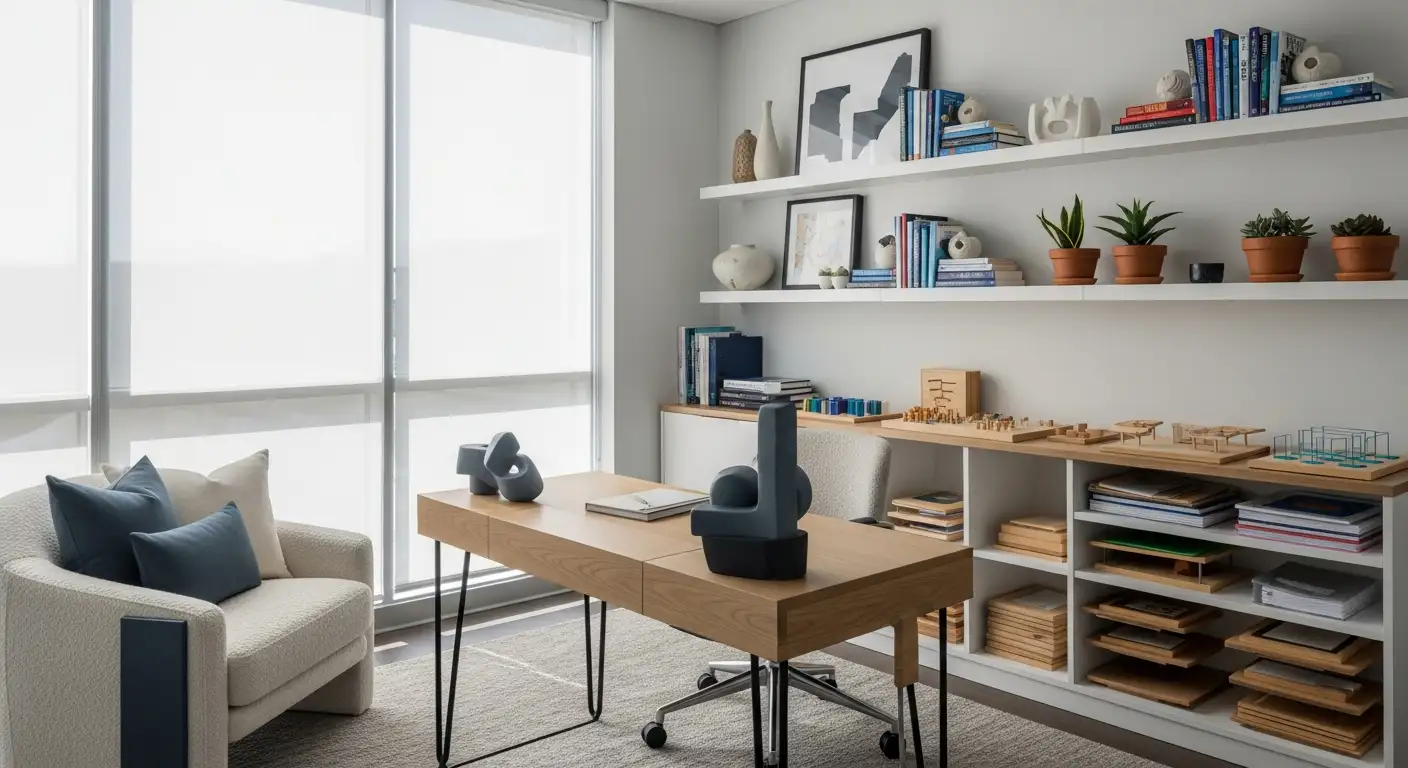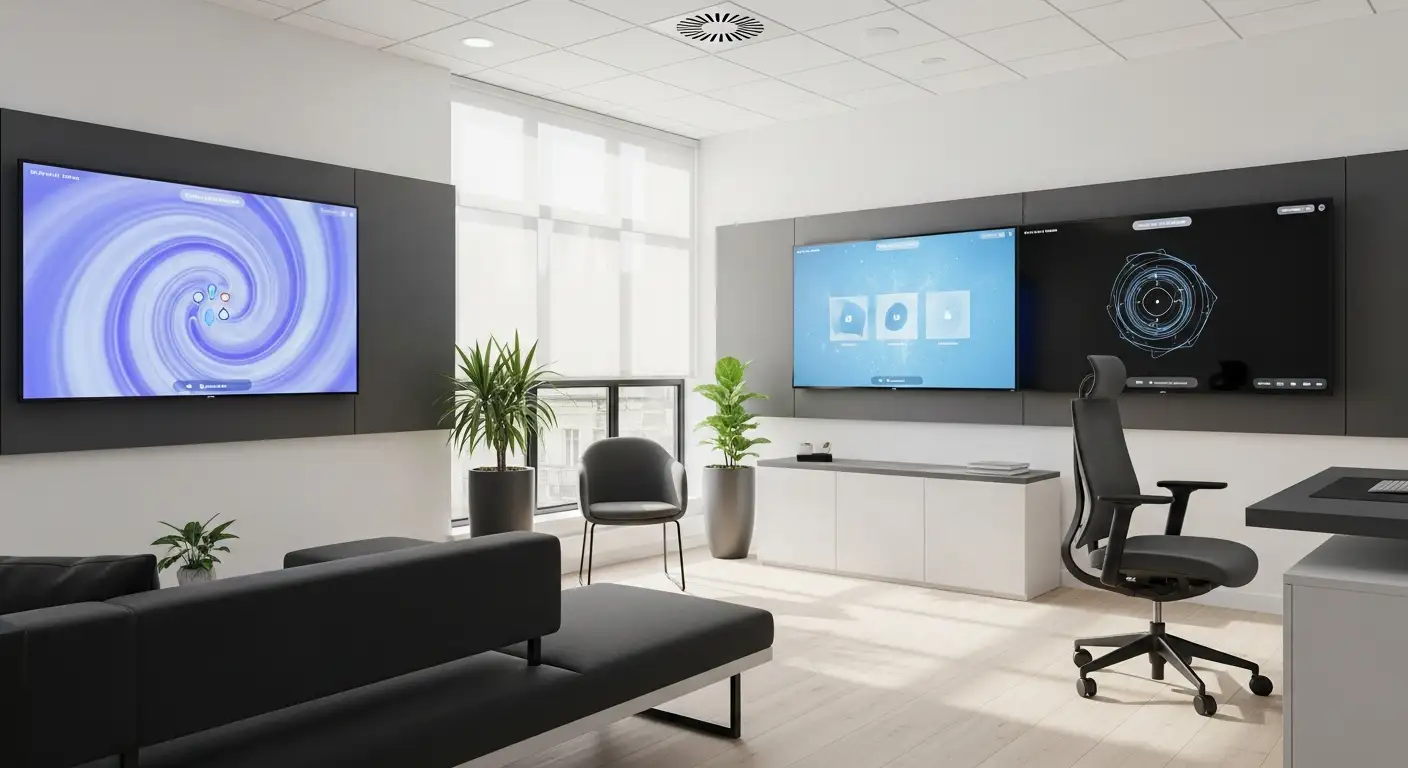Managing Sensory Overload in Autism
Creating Supportive Environments for Autism Sensory Management

Understanding and Addressing Sensory Overload in Autism
Sensory overload is a prevalent challenge faced by many individuals on the autism spectrum. It occurs when the brain receives more sensory input—such as sights, sounds, textures, or smells—than it can process effectively. Recognizing the signs, understanding the triggers, and implementing strategic support can significantly improve quality of life for autistic individuals. This article explores the neurophysiological underpinnings of sensory differences and offers practical approaches to manage sensory overload successfully.
Signs, Symptoms, and Recognition of Sensory Overload

What are common signs and symptoms of sensory overload in autism?
Sensory overload in autism can manifest through a variety of behavioral, physical, and emotional signs. One of the most recognizable behaviors is the tendency to cover ears or eyes, shielding oneself from intense stimuli. Other behaviors include withdrawing from the environment or engaging in repetitive actions like hand-flapping, rocking, pacing, or head-banging. These actions serve as self-regulation strategies or responses to sensory distress.
Individuals may also become irritable or anxious, displaying difficulty in coping with sensory input. Physical signs such as trembling, sweating, or flushing can accompany emotional discomfort. Behavioral responses often include meltdowns or shutdowns, where the individual is overwhelmed to the point of losing control or becoming non-responsive.
Emotional responses are marked by feelings of being overwhelmed, anxiety, agitation, or despair. Physically, there can be signs like dizziness, nausea, or head and joint pain, especially if the sensory overload persists. Recognizing these signs early allows caregivers and professionals to intervene promptly, providing comfort and adjusting environments to prevent escalation.
Strategies and Tools to Prevent and Manage Overload

What strategies can help manage sensory overload in children and adults with autism?
Managing sensory overload effectively involves a combination of environmental adjustments and personalized strategies. Creating sensory-friendly environments is one of the most important steps. This includes reducing excessive stimuli such as bright lights, loud noises, and overwhelming visual patterns. Using tools like noise-canceling headphones, sunglasses, and weighted blankets can help ease sensory stress.
Providing regular sensory breaks and opportunities for movement—such as swinging, jumping, or stretching—helps individuals self-regulate and avoid becoming overwhelmed. Establishing predictable routines reduces anxiety and makes adapting to environmental changes easier.
Occupational therapists often introduce sensory integration techniques that teach coping strategies suited to individual needs. These techniques might include deep pressure, calming touch, or specific sensory diets tailored to the person.
In addition, modifying environmental factors—like dimming lights or controlling sound levels—and using visual supports, such as pictographs or social stories, help prepare and support individuals through transitions or potentially overwhelming situations.
Recognizing signs of impending overload early allows caregivers and individuals to intervene promptly. Approaching these situations with calmness and understanding facilitates de-escalation and creates a sense of safety, helping prevent meltdowns or shutdowns.
What practical methods can be used to calm down from sensory overload in autism?
When sensory overload occurs, immediate calming strategies are essential. Using sensory tools like noise-canceling headphones can block out distressing sounds, while fidget toys can help redirect excess energy.
Creating a designated calming space is highly effective. This space should be quiet and free of harsh lighting, with soft textures, comforting pillows, and calming visuals. Dimming the lights and reducing visual clutter helps minimize visual overstimulation.
Engaging in calming activities such as gentle stretching, deep pressure exercises, or massage can help soothe hyperarousal levels. Techniques like deep breathing, where an individual inhales slowly for three counts, holds for three, then exhales for three, can reduce physiological signs of stress.
Implementing a sensory diet—a personalized schedule of sensory activities—by an occupational therapist provides proactive regulation and can prevent overload.
Supporting self-advocacy, by teaching children and adults to signal when they need a break or are feeling overwhelmed, fosters independence and helps manage stress before it escalates.
Ultimately, a combination of environmental modification, sensory tools, and calming techniques tailored to individual preferences offers the most effective relief from sensory overload.
Recovery and Self-Regulation after Overstimulation

How can individuals with autism recover from overstimulation?
Autistic individuals often experience overwhelm when overloaded by sensory input from sights, sounds, or textures. Recovery involves various strategies that help soothe their nervous system and regain calmness. One of the most effective methods is the use of calming sensory tools. Noise-canceling headphones or earplugs can block out loud or sudden noises, while calming music or white noise can mask overwhelming sounds.
Creating sensory-friendly spaces also contributes significantly to recovery. This space should feature dim, soft lighting, comfortable textures, and minimal clutter to reduce visual and tactile stimulation. Incorporating weighted blankets, soft pillows, or tactile toys can provide gentle, comforting pressure, which has a calming effect.
Taking regular sensory breaks is crucial. These breaks allow the individual to step away from stressful stimuli, either in a prepared quiet room or a calm corner with sensory items. Additionally, therapeutic approaches like occupational therapy and sensory integration therapy are designed to teach self-regulation techniques and help individuals recognize early signs of overload. These therapies often involve experiential activities that promote sensory modulation and planning.
Empowering individuals through self-advocacy is vital. Using tools such as visual supports, notes, or cards to communicate sensory needs helps them to articulate when they require a break or specific accommodations. Developing routines and structured environments can provide predictability, reducing anxiety and helping individuals feel more in control.
Mindfulness and relaxation exercises—such as deep breathing, guided imagery, or progressive muscle relaxation—can help soothe the nervous system. These techniques are often introduced in therapy sessions but can be practiced independently once learned.
In summary, recovery from sensory overload involves a combination of environmental adjustments, self-awareness, communication, therapeutic techniques, and calming exercises. When combined, these strategies can effectively help autistic individuals regain equilibrium and reduce the impact of future overloads.
What approaches can caregivers and professionals take to support recovery?
Support from caregivers and professionals is essential for helping individuals navigate sensory overload. Creating a calm, predictable environment is the first step. This involves soft lighting, reduced noise levels, and clutter-free spaces to minimize unexpected stimuli.
Providing personalized sensory tools is another cornerstone. Items like noise-canceling headphones, weighted blankets, sensory brushes, or fidget toys help individuals manage their own sensory input. These tools give them a sense of control over their environment and can be used proactively or during an overload.
Implementing routine sensory breaks is highly effective. Structured breaks—sometimes scheduled before known stressful situations—allow individuals to reset and become less overwhelmed. Visual supports such as picture schedules or social stories further reduce anxiety by clearly explaining what to expect, which can prevent overstimulation.
Educating caregivers, peers, teachers, and community members about sensory sensitivities fosters understanding and patience. A community that recognizes these needs provides a more inclusive atmosphere. Collaboration with occupational therapists can help develop personalized sensory diets—specific routines that include activities and tools tailored to individual needs.
Involving the individual in the planning process ensures that support strategies align with their preferences and sensory sensitivities. Regularly reviewing and adjusting techniques enhances their effectiveness.
In essence, supporting recovery is about creating supportive environments, providing tools, and ensuring open communication. These combined efforts promote autonomy and help individuals manage their sensory experiences more effectively, leading to better emotional regulation and quality of life.
Additional Resources and Strategies
For further understanding, search terms like "supporting recovery from sensory overload in autism" offer valuable guidance. Tailored interventions, combined with compassionate support, can significantly improve how individuals respond to and recover from sensory overload episodes.
Emphasizing early recognition of overload signs and preparing appropriate interventions are crucial. When these tools are used consistently, they not only foster resilience but can also reduce the frequency and severity of overloads, enabling individuals to participate more fully in daily activities.
Overall, recovery from sensory overload relies on a combination of sensory management tools, structured routines, effective communication, and professional support—empowering autistic individuals to live more adaptive and fulfilling lives.
Supporting Individuals with Sensory Sensitivities

What are effective approaches and interventions for supporting individuals with sensory sensitivities?
Supporting individuals with sensory sensitivities requires a combination of personalized therapies, environmental modifications, and supportive strategies. Occupational therapy, especially sensory integration therapy, plays a central role. These therapies often include creating a sensory diet—a tailored plan with activities designed to help regulate sensory input. For example, swinging, deep pressure, the use of weighted blankets, or gentle tactile activities can improve tolerance to sensory stimuli.
Environmental changes are equally important. Reducing noise levels by installing sound-absorbing panels or using noise-canceling headphones can significantly lessen auditory overload. Adjustments to lighting, such as dimming fluorescent bulbs or using softer, warm lighting options, help reduce visual overstimulation. Designating sensory-friendly spaces within homes, schools, or workplaces provides a safe retreat for individuals to decompress.
Visual supports like social stories, warning cues, or schedules prepare individuals for upcoming changes, reducing anxiety and helping them manage sensory triggers better.
Using sensory tools such as sunglasses for bright environments, fidget toys for tactile input, and calming music or art therapies can facilitate sensory regulation through enjoyable activities. Such tools also serve as communication aids, helping individuals express their needs more clearly.
Effective support hinges on close collaboration between caregivers, therapists, educators, and the individuals themselves. Customizing strategies based on individual preferences and responses ensures better outcomes. When combined, these therapies and accommodations promote greater engagement, reduce distress, and foster independence.
How can caregivers and professionals support individuals experiencing sensory overstimulation?
Supporting someone during sensory overload starts with creating a calm, predictable environment. This might involve turning off bright or flickering lights, reducing background noise, and removing overwhelming visual clutter.
Personalized sensory tools significantly aid self-regulation. Noise-canceling headphones or earplugs block out loud or sharp sounds. Weighted blankets or compression vests provide calming deep pressure, and tactile objects like stress balls or textured fabrics can help maintain focus.
Implementing regular sensory breaks is essential. Visual schedules or cue cards can remind individuals to take a break when needed. Offering a designated quiet space—a ‘calm room’ equipped with soft lighting, comfortable seating, and sensory toys—allows individuals to reset.
Educational efforts are also vital. Training caregivers, teachers, and peers to understand sensory sensitivities fosters a supportive environment. This includes recognizing signs of overload and knowing appropriate calming interventions.
Collaboration with occupational therapists helps tailor sensory diets—specific activities and routines that support sensory regulation throughout the day. Regular review and adaptation of strategies ensure they remain effective and responsive to the individual’s changing needs.
Overall, these measures contribute to an environment where individuals feel safe, understood, and empowered to communicate their needs, reducing the frequency and severity of sensory overload episodes.
Understanding Neurophysiological Differences in Sensory Processing
What does sensory processing difference associated with autism, and how does it affect daily life?
Individuals with autism often experience sensory processing differences caused by atypical neural pathways. These variations can lead to hypersensitivity — an overreaction to stimuli like bright lights, loud noises, or certain textures — or hyposensitivity, where sensory input feels muted or less noticeable. Such differences make filtering and integrating sensory information challenging.
As a result, individuals may experience sensory overload, triggering stress, anxiety, physical discomfort, or behavioral responses such as withdrawal and meltdowns. For example, a child might become distressed in a brightly lit, noisy classroom or refuse to wear certain clothing due to tactile sensitivities. These experiences can hinder social interactions, concentration, and participation in daily routines.
Understanding these sensory differences allows caregivers, teachers, and therapists to create supportive environments. Implementing sensory-friendly modifications—like dimmed lighting, noise-canceling headphones, or calm sensory zones—can significantly improve comfort and functioning.
In daily life, recognizing sensory sensitivities enables tailored strategies that promote better engagement, reduce distress, and improve overall quality of life for individuals on the spectrum. Supporting sensory needs helps foster more inclusive settings where autistic individuals can thrive.
What neurophysiologic findings are linked to sensory sensitivities in autism?
Research indicates that sensory sensitivities in autism are rooted in atypical neural processing at early stages of sensory input. Abnormal responses in brainstem structures and cortical areas have been documented, especially in relation to processing complex sounds.
For auditory stimuli, neurophysiological studies reveal that individuals with autism often have irregular brainstem responses and atypical cortical activity, leading to difficulties in discriminating sounds or understanding speech in noisy environments. Such abnormalities may contribute to the heightened sensitivity or confusion experienced during auditory overload.
Tactile processing differences are also linked to disrupted cortical representations of touch, which can cause hypersensitivity or dulled sensation. Furthermore, visual processing anomalies, including issues with face perception and biological motion recognition, correspond with altered activity in visual cortex areas.
These neurophysiologic markers demonstrate that sensory sensitivities are not solely behavioral but have a neurological basis. They highlight the importance of neural circuitry in sensory processing and open avenues for potential biomarkers, aiding in diagnosis and monitoring therapeutic efficacy.
Understanding these mechanisms provides insight into why sensory experiences are so varied among individuals with autism and supports the development of targeted interventions.
Variations in sensory processing among individuals with autism
Sensory processing differences are highly individualized within the autism spectrum. Some people may be over-sensitive to certain stimuli, leading to distress or withdrawal. Others may be under-sensitive, engaging in sensory-seeking behaviors like humming or spinning.
Common variations include hypersensitivity to light, sound, smell, or touch, which can cause discomfort and avoidance behaviors. Conversely, hyposensitivity might result in a preference for intense sensory input, such as loud noises or deep pressure, and a tendency to crave such stimulation.
These differences influence daily routines, communication, and interaction with the environment. For example, a person with visual hypersensitivity might need sunglasses or tinted filters, while someone with tactile hyposensitivity might seek deep pressure or textured objects.
Recognizing this diversity is key to providing personalized supports. Strategies can include sensory diets, environmental adjustments, and activity modifications that match individual sensory profiles.
Sensory processing and attention deficits
Many individuals with autism also experience attention regulation challenges related to sensory processing. Arousal from sensory overload can impair focus, contribute to distractibility, or cause difficulties in shifting attention.
For example, intense auditory or visual stimuli may dominate focus, making it hard to engage in conversations or tasks. Conversely, under-responsive individuals may not notice important cues, impacting safety and social interactions.
Addressing these issues involves managing sensory input through breaks, calming strategies, and structured routines. Enhancing attention regulation can improve learning, social participation, and daily functioning.
Potential biomarkers for sensory sensitivities
Neurophysiological research suggests that specific brain responses can serve as biomarkers for sensory sensitivities in autism. Variations in early sensory response patterns, such as abnormal brainstem responses to sound, or atypical cortical activity in response to visual and tactile stimuli, are promising indicators.
Identifying these biomarkers can facilitate earlier diagnosis and personalized intervention planning. Ongoing studies aim to validate neurophysiologic measures as reliable tools for assessing sensory processing differences, monitoring progress, and tailoring therapies.
Understanding these underlying mechanisms highlights the neurobiological basis of sensory sensitivities, supporting more precise and effective support strategies for autistic individuals.
Fostering Awareness and Accommodation for Sensory Needs
Managing sensory overload in autism requires a comprehensive understanding of individual sensory profiles, early recognition of signs, and the strategic creation of support plans. Employing a combination of environmental modifications, therapeutic interventions, and proactive coping strategies can significantly reduce the frequency and severity of overloads. Critical to success is education for caregivers, professionals, and communities to foster inclusive environments that respect sensory differences. By promoting awareness and offering tailored supports, we can enable autistic individuals to navigate their environments more comfortably, participate fully in daily activities, and improve their overall well-being.
References
- Sensory differences - a guide for all audiences
- Autism: Managing Over-stimulation and Stress
- Top 5 autism tips: managing sensory differences
- How To Manage (and Even Overcome) Sensory Overload
- Sensory Processing in Autism: A Review of Neurophysiologic Findings
- Sensory Overload With Autism Burlington - Monarch House
- 8 Coping Strategies For Sensory Overload In Children With Autism
- Autistic sensory sensitivities | Autism Awareness Australia
- Sensory overload: Symptoms, causes, and treatment






